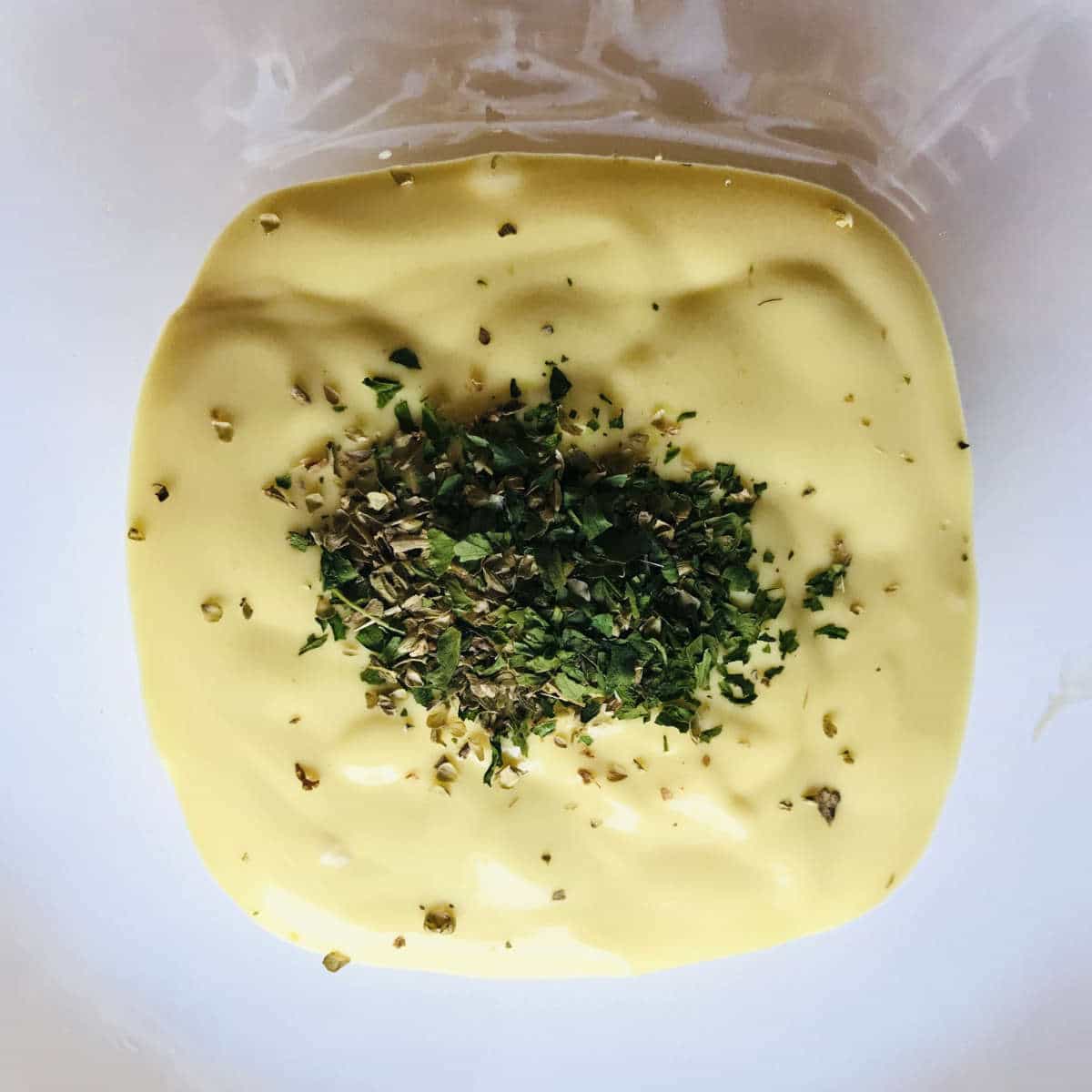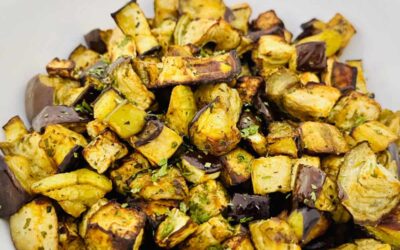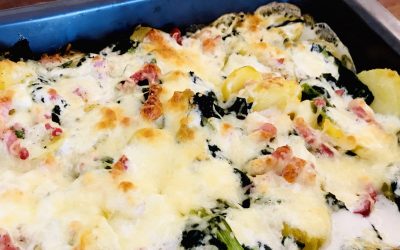This Recipe includes
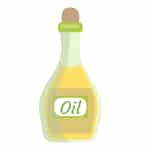
| Olive oil |
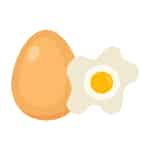
| Egg yolks |
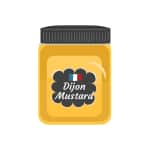
| Dijon mustard |
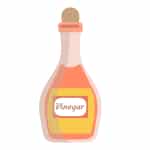
| Vinegar (wine or apple cider) |
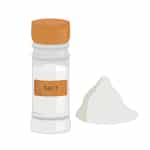
| Salt |
Why we love it
If you love mayonnaise, but want to get away from the store-bought artifical stuff, you’ve come to the right place. Most store-bought mayonnaise is made with a chemical called polyoxyethylene sorbitan monostearate, instead of real egg yolks. This additive makes the mayonnaise much more stable for shelf life, to allow it to be kept for a longer period of time. But the flavor of it has very little to do with that of a real homemade French mayonnaise.
In France, mayonnaise is used as a sauce in a lot of dishes to make them tangier and creamier. It is used as a spread or dip, by itself, or with flavors added like garlic and herbs to add a bit of spice.
A french mayonnaise is actually very easy to make, incredibly delicious and much better than the store bought one. And it is not actually as fattening as the fake chemical stuff.
According to legend, mayonnaise was created in 1756 by the cook of the French Duc of Richelieu with the only two ingredients he had available (eggs and oil) after the capture of Port-Mahon in Spain, against the English. Hence the name of “Mahonnaise“.
However, it is quite similar to the garlicky aioli sauce which could have already existed at the time in southern France and Spain, so there is a question of which came first, the chicken or the egg. Nevertheless, the mayonnaise recipe soon began appearing in French cookbooks in the 18th century, and a culinary treat was born.
And so with that, let’s get to preparing the sumptuous French mayonnaise recipe, shall we? Allons-y!
Preparation Tips
Now, french mayonnaise is not the most complicated recipe in the world, but there are a few ways that it can go a bit wrong. So I thought I’d put together a list of quick tips to set yourself up for success:
1. Eggs should be at room temperature.
In France, eggs are kept outside, not in the fridge. (Their shells are also brown on the outside, but that is another story. You can read more fun French food facts here.)
So when most French recipes call for eggs, they mean these eggs that are room temperature. You will want to leave the eggs out for a good 2-3 hours before using them in the recipe, as they will emulsify much more easily at room temperature.
2. Use a whisk, not a fork.
I recommend using a whisk or a mixer to emulsify the eggs with the mustard and vinegar. Stirring with a fork simply doesn’t get as much air into the sauce, and it will take longer and not be as good.
3. Use the correct oil
French mayonnaise is usually made with olive oil or grape seed oil. The oil is the base of a good French mayonnaise, so you need a quality 100% vegetable oil. Extra virgin olive oil will give the mayonnaise a nice strong flavor. For a lighter flavor, a good sunflower or corn oil will also work for a smooth and creamy base.
If you don’t have either, don’t just reach for the nearest cooking oil you do have. Cooking oils are meant for cooking may not be as pure as you want for a mayonnaise.
4. Add the oil after the mustard and eggs have already combined.
It may seem like a good idea to add everything and then start mixing, but to get a smooth mayonnaise, the oil should be added in last in a slow trickle while the mayonnaise is being whisked.
How to fix a failed mayonnaise
a) If it is too runny
Beat an egg yolk in a separate bowl and add it while beating your mayonnaise.
b) If it is too firm
Dilute it with a little water. Beat well and do not add too much water at one time.
c) If it is not emulsifying together
First, try adding a 1/2 tablespoon of room temperature water while whisking to bind the mayonnaise.
If that doesn’t work, in a separate bowl, beat another egg yolk with a spoon of mustard and a little salt. Add in very small amounts to the failed mayonnaise while stirring. The mayonnaise should start to hold and set again.
Other similar sauces
The French mayonnaise is not one of the official “mother sauces”, but it leaves that honor to its derivative sauce, the hollandaise. In essence, the other sauces that are offshoots of the mayonnaise are:
- Hollandaise: sauce made from egg yolks, melted butter, and lemon juice.
- Tartare: sauce made from egg yolk, chopped pickles, capers and herbs such as tarragon and dill.
- Aioli: sauce made from garlic, egg yolks, olive oil, lemon juice, and mustard.
- Béarnaise: sauce made from egg yolk, butter, white wine vinegar, and herbs.
- Rouille: spicy sauce for a bouillabaisse. Made with egg yolks, olive oil, mustard, garlic, saffron, and cayenne pepper.
What to serve it with?
In France, mayonnaise is used to dip french fries in (not ketchup). In addition, mayonnaise can be used as a sauce with many dishes like charcuterie, eggs (œufs mayonnaise or mimosa), grilled steak, coleslaw, etc.
You can also use it in sandwiches like the croque monsieur and madame.

How to store it?
Since it contains uncooked egg yolks, the mayonnaise should not be frozen as it will develop bacteria. (Some websites will tell you it is possible, but there is a long list of requirements in order to stop it from spoiling and to avoid getting sick. I prefer not to take the chance!)
Fresh is what will taste best, but you can however prepare it a day or so in advance and keep it in the fridge.

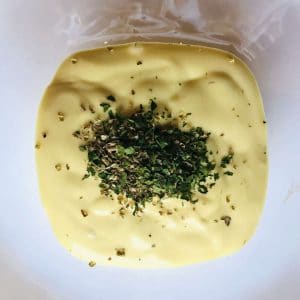
French Mayonnaise recipe (home-made)
Equipment
Ingredients
- 2 egg yolks
- 25 cl of olive oil (1 cup)
- 1 tablespoon of dijon mustard
- pinch of salt
- 1 teaspoon of vinegar, wine or apple cider
Instructions
- Let the eggs come to room temperature.
- In a bowl, whisk the eggs, mustard, and vinegar together.
- Gradually add the olive oil whisking as you do so.
- Add a pinch of salt and pepper as you are whisking.
- Set aside once the mayonnaise is smooth and serve when ready.
Notes
Nutrition
Please note: We are not certified nutritionists and these estimates are approximate. Each individual’s dietary needs and restrictions are unique to the individual.
You are ultimately responsible for all decisions pertaining to your health. This website is written and produced for entertainment purposes only.

If you enjoyed that, check out our other classic French recipes that are easy to prepare. Bon appétit and à bientôt !
